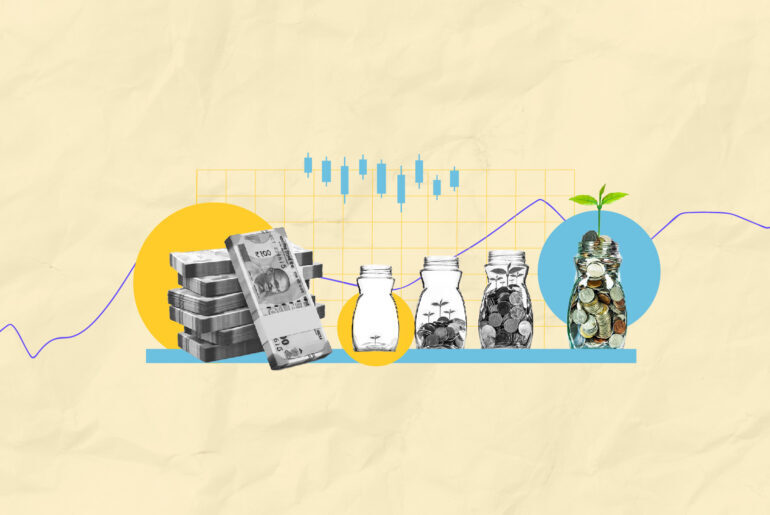Last Updated on May 4, 2021 by Manonmayi
Penny or cents are a part of American currency. A 100 pennies make a dollar, while a 100 paise makes a rupee. They’re both the lowest form of physical money in their countries, even if 1 penny is about 73 paise. But you can’t buy a lot with 73 paise these days. In the ’60s, you could get a masala dosa for that amount. However, a masala dosa now costs anywhere between Rs 50 to Rs 200.
A worker from the ’60s would have perceived 50 paise differently than the modern millennial. Value then becomes relative and hard to define. Value in investing is found when you recognize the stock’s potential and worth and act on it, no matter how cheap or risky it is perceived to be. For example, shares of Symphony, a relatively unknown company in the cooling industry, surged a massive 43,000% – from Rs 3.64 on 20th Nov 2007 to around Rs 1,567 by 2017.
While multiple factors affect such rapid growth of a company like Symphony, they are usually extended. Rarely does a stock gain significantly in a short period of time as it takes time for even top-performing companies to grow. COVID was and is a rarity and caused severe fluctuations in the market. Throughout 2020, BSE Sensex and Nifty 50 dropped by over 30%. Companies scaled back, layoffs have been rampant, and multiple industries were shot down, leading to rapid stock fluctuations. In contrast, some companies have thrived in this period leading to a largescale rise in return rates, similar to Symphony.
Penny stocks, such as Symphony’s, can provide great returns. They are called penny stocks because they are cheap and come at a lower price. They are also called smallcap or nano-cap stocks. Smallcap companies are those that have a market capitalization rate of fewer than Rs 5,000 cr. A company’s market capitalization is the total number of outstanding shares multiplied by its current value. For instance, if Apple is currently valued at $2,000 and has 6,00,000 shares, then its market capitalization is $2 bn.
Like how Maggi Noodles became synonymous with 2-minute noodles and spawned a flurry of Indian batsmen jokes, penny stocks got the name because of their meager prices. The Indian team has performed brilliantly although cheap accusations and so too have penny stocks proving that they are worth their weight in….well, stores! Penny stocks are low-cost stocks, usually less than $5, that can generate returns many times (10x to above 1000x) your investment. Coined by the great investor Peter Lynch, stocks that generate multifold returns are called multibagger stocks or multibaggers. Penny stocks that do the same are called penny multibaggers.
This article covers:
Table of Contents
Multibagger penny stocks of 2021
1. Ashirwad Capital
Ashirwad Capital gained more than 72% from Rs 2.5 on Jan 2021 to Rs 4.3 on 10th Mar 2021 with a market cap of Rs 17.24 cr. Established in 1985, they are engaged in trading, investments, and inter-corporate deposits.
2. Angel Fibers Ltd
A company based in the textile industry, Angel Fibers, leapt into the penny multibagger territory, gaining 65% from Rs 7.20 in Dec 2020 to Rs 11.85 for a market cap of around Rs 29.63 cr as of Jan 2021.
Market volatility, companies’ performance, and once-in-a-century events like the pandemic all affect the success of penny multibaggers. Let us look at some of the features that help recognize penny stocks. While Tickertape’s MMI and stock analysis tools are tailored to make recognizing penny multibaggers easier, understanding their nature also helps.
Features of penny stocks
1. They are cheap
Penny stocks are available at meager prices and are easy to buy.
The downside – Cheap stocks can be challenging to trust. Not many investors wanted to buy Symphony’s stores because they were relatively unknown and cheap. Even its investors lost faith in 2001.
The upside – They cost little to none. You could have bought 100 shares of Symphony for Rs 3,000 in 2007 and sold it for Rs 1,56,700 in 2021.
2. They are illiquid
Penny stocks can be illiquid, meaning there may not be enough buyers and sellers to transact the stock at all times.
The downside – It is difficult to get buyers for penny stocks, and hence the chances of a quick sell to capitalize on your gains are limited.
The upside – The penny stocks might increase further in value by the time you find a buyer.
3. Unpredictability
Penny stocks are tough to predict. Recognizing them can be very difficult, meaning even if you find a buyer for them, the returns might not be what you planned for.
The downside – They might go at a lower price.
The upside – They might go at a higher price.
Multibagger penny stocks of 2020
1. CG Power & Industrial Solutions
You might know them as Crompton Greaves Limited, and this Indian MNC primarily produces and markets consumer electrical goods. Their water heaters and designer fans are famous for their efficiency and aesthetics. They became exclusively popular in 2020 when temperature swings were rapid, and their stock rose by 299% to Rs 43.20 on 24th Dec 2020, from Rs10.82 on 31st Dec 2019. I guess we’re all fans now.
2. Biofil Chemicals & Pharmaceuticals
Founded less than 4 decades ago, Biofil Chemicals and Pharmaceuticals produce what their name suggests. They also seem to be having high-quality results when it comes to their stock, with an excellent return rate given that 2020 involved a global pandemic. But what is surprising is the sheer scale of the growth. The stock rose about 1,211% to Rs 169.75 as of 20th Nov 2020, from Rs 12.95 as of 30th Jun 2020. It looks like they take care of your financial health as well.
3. Tanla Platforms
Previously known as Tanla Solutions, they decided to rebrand themselves as Tanla Platforms. It’s unlikely to be a numerology thing, but their stocks rose from a 50 week low of Rs 38 to Rs 936 as of Jan 2021. The cloud communications providers were the best multibagger of 2020, with a return of over 1838% in 9 mth. 1838% is up there with the all-time highest stock multiplications, above Netflix. No wonder Bill Gates’s Microsoft wants to work with them.
4. Alok Industries
Some companies rise from a platform, and others rise from death. Alok Industries were bankrupt around 2018, and their stocks were priced at just Rs 3 (about the price of a wheat penny) at the start of 2020. It then rose to about 600% to Rs 21.55 by the end of last year. Investing Rs 30,000 in this would have fetched you over 2 lakh.
Conclusion
That’s a great way to spend pennies, but a masala dosa from the ‘60s doesn’t sound too bad either. Tickertape’s MMI index and stock analysis help in understanding the sentiments of the market and assist you in recognising penny multibaggers by providing material for your research. Penny multibaggers can give incredible rewards, but it is essential to understand the risks associated with them. Knowing when to hold and release will also help you make the most of penny multibaggers.
- 10 Mind-blowing Facts About Harshad Mehta - May 30, 2025
- How DSP’s ETF Campaign Succeeded on Tickertape? - May 7, 2024
- Earnings Per Share Guide 2022 – Importance, Formula and Calculation - Aug 20, 2021





